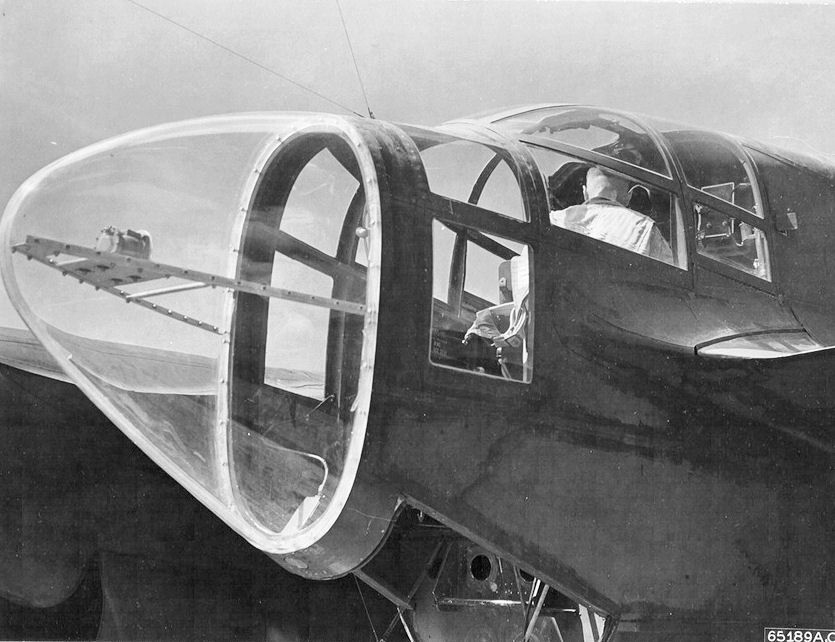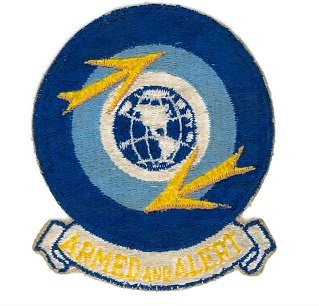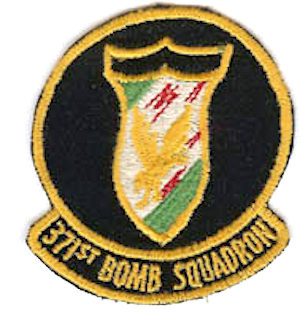|
Mokerang Airfield
Mokerang Airfield, was an airfield on the northwest tip of Los Negros Island, NNW of Momote Airfield. History It was built by the Imperial Japanese at Mokerang Plantation shortly after Lorengau Airfield during World War II and liberated during the Battle of Los Negros as part of the Admiralty Islands campaign. The 836th Engineer Aviation Battalion and Seabee constructed two runways long × wide and overruns at each end, and the 104th Naval Construction Battalion and 46th Naval Construction Battalion built the taxiways and dispersal areas as part of Manus Naval Base. The runways had a bearing WNW/ESE 114 degrees/294 degrees magnetic. A storage depot for 30,000 barrels of fuel was stockpiled at Mokerang. The airfield was abandoned at the end of the war and has been reclaimed by vegetation. Units based at Mokerang *13th Air Force (13th Air Task Force) *307th Bombardment Group HQ **424th Bombardment Squadron (B-24s) **370th Bombardment Squadron (B-24s) ** 371st Bombardment Squ ... [...More Info...] [...Related Items...] OR: [Wikipedia] [Google] [Baidu] |
Thirteenth Air Force
The Thirteenth Air Force (Air Forces Pacific) (13 AF) was a numbered air force of the United States Air Force Pacific Air Forces (PACAF). It was last headquartered at Hickam Air Force Base on the island of Oahu, Hawaii. 13 AF has never been stationed in the continental United States. It was one of the oldest continuously active numbered air forces in the United States Air Force. The command plans, commands and controls, delivers, and assesses air, space, and information operations in the Asia-Pacific region—excluding the Korea theater of operations—across the security spectrum from peacetime engagement to major combat operations. Established on 14 December 1942 at Plaine Des Gaiacs Airfield, on New Caledonia, 13 AF was a United States Army Air Forces combat air force deployed to the Pacific Theater of World War II. It engaged in operations primarily in the South Pacific, attacking enemy forces in the Solomon Islands, Gilbert and Marshall Islands campaigns; Mariana and Pala ... [...More Info...] [...Related Items...] OR: [Wikipedia] [Google] [Baidu] |
P-61
The Northrop P-61 Black Widow is a twin-engine United States Army Air Forces fighter aircraft of World War II. It was the first operational U.S. warplane designed as a night fighter, and the first aircraft designed specifically as a night fighter. Named for the North American spider '' Latrodectus mactans'', it was an all-metal, twin-engine, twin-boom design armed with four forward-firing 20 mm (.79 in) Hispano M2 autocannon in the lower fuselage, and four M2 Browning machine guns in a dorsal gun turret. Developed during the war, the first test flight was made on May 26, 1942, with the first production aircraft rolling off the assembly line in October 1943. Although not produced in the large numbers of its contemporaries, the Black Widow was operated effectively as a night fighter by United States Army Air Forces squadrons in the European Theater, Pacific Theater, China Burma India Theater, and Mediterranean Theater during World War II. It replaced earlier ... [...More Info...] [...Related Items...] OR: [Wikipedia] [Google] [Baidu] |
419th Night Fighter Squadron
The 419th Night Fighter Squadron is an inactive United States Air Force unit. Its last assignment was with Thirteenth Air Force, being inactivated at Floridablanca, Luzon on 20 February 1947. The unit was formed in 1943. After training, it was deployed to Thirteenth Air Force and ordered to New Guinea to provide air defense interceptor protection against Japanese night air raids on USAAF airfields. It later served in the Philippines Campaign where in addition to night interceptor missions it also flew day and night interdiction missions against enemy troop movements, brides and other targets of opportunity. It was inactivated in 1947. History Activated on 1 April 1943. Trained at Kissimmee, Florida and trained in Douglas P-70 Havoc night fighters due to non-availability of P-61 Black Widows. By the end of training, the night fighter pilots realized that the Black Widow would not be forthcoming and resigned themselves to the fact they would be going overseas with P-70s. The ... [...More Info...] [...Related Items...] OR: [Wikipedia] [Google] [Baidu] |
18th Fighter Group
018 may refer to *Air Canada Flight 018, an airline flight from Hong Kong to Vancouver, Canada, illegally boarded by a Chinese man wearing a disguise in 2010 *Area code 018, a telephone area code in Uppsala, Sweden *BMW 018, an experimental turbojet engine produced in Germany during the Second World War 1940–1944 *Tyrrell 018, a Formula One racing car 1989–1990 *Xfone 018, a cellular telephone and internet service company in Israel founded in 2000 ** 018, the international call prefix for the Xfone 018 provider in telephone numbers in Israel See also * * O18 (other) O18 or O-18 may refer to: Places Airports * Hanford Municipal Airport, in California, United States; formerly assigned FAA LID O18 * Buzzards Roost Airport (FAA LID O18), Inola, Oklahoma, USA; see List of airports in Oklahoma Rail stations * Ton ... (using the letter 'O' rather than a zero) * 18 (other) {{disambiguation ... [...More Info...] [...Related Items...] OR: [Wikipedia] [Google] [Baidu] |
372nd Bombardment Squadron
The 372nd Bombardment Squadron is an inactive United States Air Force unit. Its last assignment was with the 307th Bombardment Wing at Lincoln Air Force Base, Nebraska, where it was inactivated on 25 March 1965. History World War II Formed as a heavy bombardment squadron in January 1942, trained in the Pacific Northwest under Second Air Force, with Boeing B-17 Flying Fortresses. Reassigned to Seventh Air Force in Hawaii, November 1942 and performed performing search and rescue and antisubmarine patrols until January 1943 while transitioning to long-range Consolidated B-24 Liberator heavy bombers. Deployed to the Central Pacific from Hawaii throughout 1943 for long-range combat bombardment operations against Japanese forces in the Central Pacific; New Guinea; Northern Solomon Islands and Eastern Mandates campaigns. Deployed to the New Hebrides in Melanesia and operated from numerous temporary jungle airfields, engaging in long-range bombardment operations during the Bismar ... [...More Info...] [...Related Items...] OR: [Wikipedia] [Google] [Baidu] |
371st Bombardment Squadron
The 371st Bombardment Squadron is an inactive United States Air Force unit. Its last assignment was with the 307th Bombardment Wing, based at Lincoln AFB, Nebraska. It was inactivated on 25 March 1965. History Formed as a heavy bombardment group in January 1942, trained in the Pacific Northwest under Second Air Force, with B-17 Flying Fortresses. Reassigned to Seventh Air Force in Hawaii, November 1942 and performed performing search and rescue and antisubmarine patrols until January 1943 while transitioning to long-range B-24 Liberator heavy bombers. Deployed to Central Pacific from Hawaii throughout 1943 for long-range combat bombardment operations against Japanese forces in the Central Pacific; New Guinea; Northern Solomon Islands and Eastern Mandates campaigns. Deployed to the New Hebrides in Melanesia and operated from numerous temporary jungle airfields, engaging in long-range bombardment operations during the Bismarck Archipelago; Western Pacific; Leyte; Luzon and ... [...More Info...] [...Related Items...] OR: [Wikipedia] [Google] [Baidu] |
370th Bombardment Squadron
{{Numberdis ...
37 may refer to: * 37 (number), the natural number following 36 and preceding 38 Years * 37 BC * AD 37 * 1937 * 2037 Other uses * ''37'' (album), by King Never, 2013 * ''37'' (film), a 2016 film about the murder of Kitty Genovese * 37 (MBTA bus), a bus route in Boston, Massachusetts, US * 37 (New Jersey bus), a NJ Transit bus route in New Jersey, US * "Thirty Seven", a song by Karma to Burn from the album ''Almost Heathen'', 2001 See also * 37th (other) * List of highways numbered 37 The following highways are numbered 37: Australia * Newcastle Inner City Bypass * Nubeena Road (TAS) Canada * Alberta Highway 37 * British Columbia Highway 37 * Winnipeg Route 37 * Ontario Highway 37 * Saskatchewan Highway 37 * Yukon Highwa ... [...More Info...] [...Related Items...] OR: [Wikipedia] [Google] [Baidu] |
B-24 Liberator
The Consolidated B-24 Liberator is an American heavy bomber, designed by Consolidated Aircraft of San Diego, California. It was known within the company as the Model 32, and some initial production aircraft were laid down as export models designated as various LB-30s, in the Land Bomber design category. At its inception, the B-24 was a modern design featuring a highly efficient shoulder-mounted, high aspect ratio Davis wing. The wing gave the Liberator a high cruise speed, long range and the ability to carry a heavy bomb load. Early RAF Liberators were the first aircraft to cross the Atlantic Ocean as a matter of routine. In comparison with its contemporaries, the B-24 was relatively difficult to fly and had poor low-speed performance; it also had a lower ceiling and was less robust than the Boeing B-17 Flying Fortress. While aircrews tended to prefer the B-17, General Staff favored the B-24 and procured it in huge numbers for a wide variety of roles. At approximately ... [...More Info...] [...Related Items...] OR: [Wikipedia] [Google] [Baidu] |
424th Bombardment Squadron
The 424th Bombardment Squadron is an inactive United States Air Force unit. Its last assignment was with the 307th Bombardment Wing at Lincoln Air Force Base, Nebraska, where it was inactivated on 1 January 1962. The squadron was first activated in April 1942 as the 34th Reconnaissance Squadron, one of the original four squadrons of the 307th Bombardment Group, but was redesignated the 424th Bombardment Squadron shortly afterwards. After training in the United States, it deployed to the Pacific, serving mainly in the Southwest Pacific Theater. The squadron earned two Distinguished Unit Citations for its actions in combat. Following V-J Day, it returned to the United States for inactivation. The squadron was activated as a light bomber crew training unit during the Korean War, replacing an Air National Guard unit that had been mobilized for the war and was returning to state control. It was inactivated and its personnel and equipment transferred to another unit in connectio ... [...More Info...] [...Related Items...] OR: [Wikipedia] [Google] [Baidu] |
307th Bombardment Wing
3 (three) is a number, numeral and digit. It is the natural number following 2 and preceding 4, and is the smallest odd prime number and the only prime preceding a square number. It has religious or cultural significance in many societies. Evolution of the Arabic digit The use of three lines to denote the number 3 occurred in many writing systems, including some (like Roman and Chinese numerals) that are still in use. That was also the original representation of 3 in the Brahmic (Indian) numerical notation, its earliest forms aligned vertically. However, during the Gupta Empire the sign was modified by the addition of a curve on each line. The Nāgarī script rotated the lines clockwise, so they appeared horizontally, and ended each line with a short downward stroke on the right. In cursive script, the three strokes were eventually connected to form a glyph resembling a with an additional stroke at the bottom: ३. The Indian digits spread to the Caliphate in the 9th c ... [...More Info...] [...Related Items...] OR: [Wikipedia] [Google] [Baidu] |
Manus Naval Base
Manus Naval Base, Naval supply depot with piers and quonset Hut warehouses on September 18, 1945 Manus Naval Base was a number of bases built after the World War II Battle of Manus by United States Navy on the Manus Island and a smaller island just east, Los Negros Island in the Admiralty Islands chain. The major naval base construction started with the Los Negros landings on February 28, 1944. The Navy repaired and did the expansion of the airfields on the Admiralty Islands. United States Navy Seabee built or repaired the facilities on the islands. The large Manus Naval Base, also called the Admiralty Island base, supported United States Seventh Fleet, Southwest Pacific command, and part of the Pacific Fleet. The base was abandoned by the US Navy after the war. History Japanese called Los Negros Island the Hyane Island and had built some facilities on the two islands. Manus Island was picked for a major air and sea base as it was near Empire of Japan strong points: 387 ... [...More Info...] [...Related Items...] OR: [Wikipedia] [Google] [Baidu] |







